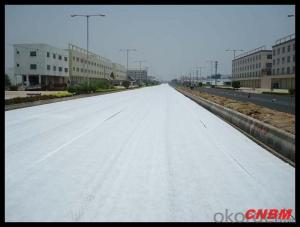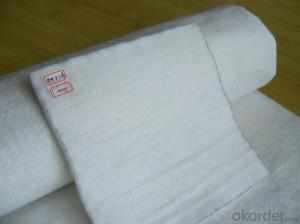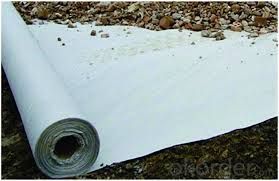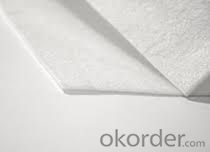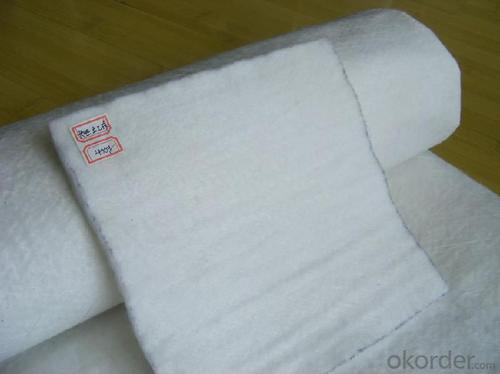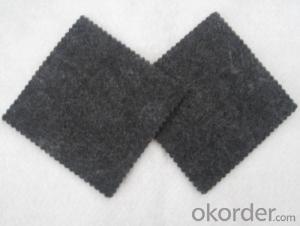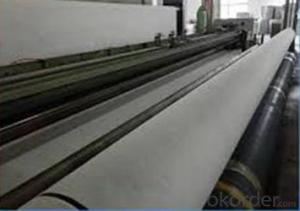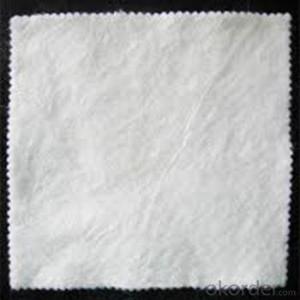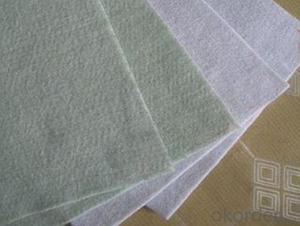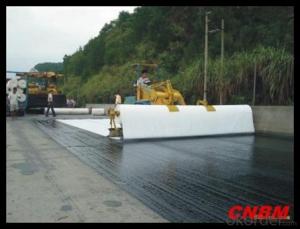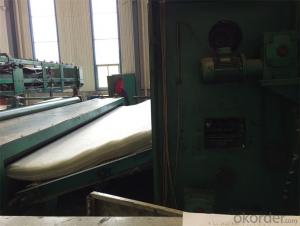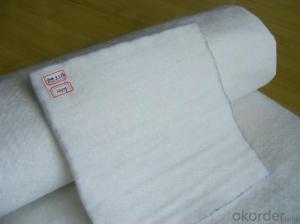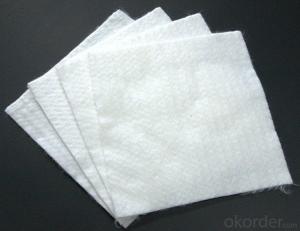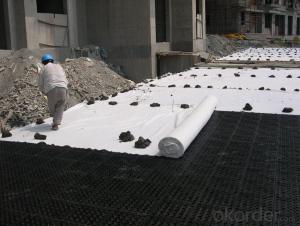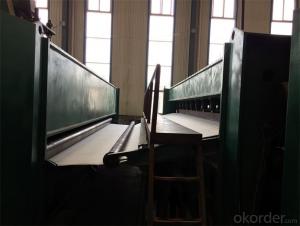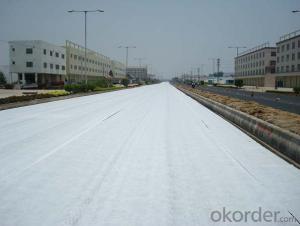Home Depot Geotextile - Short Nonwoven Geotextile with High Strength for Construction
- Loading Port:
- China main port
- Payment Terms:
- TT OR LC
- Min Order Qty:
- 2000 m²
- Supply Capability:
- 3000000 m²/month
OKorder Service Pledge
OKorder Financial Service
You Might Also Like
Specification
Product Introduction
Geotextile Products Show:

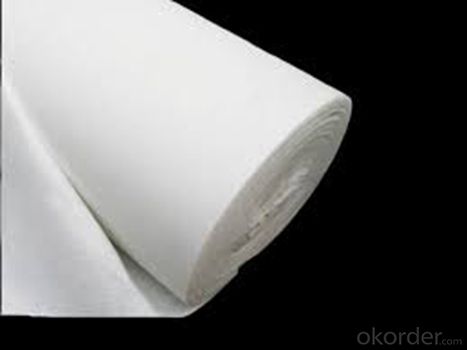
4.Product Technical Data (Confirming GB/T17642-1998 standard)
Packaging & Shipping
Packing: PLASTIC FILM INSIDE, AND WOVEN BAG OUTSIDE
Shipping: About 15 days after receipt the deposit
pecifications
geotextile fabric
permeability,filtration,easy for construction
ISO and CE certificate
Good quality and competitive price
Our Service
Quality assurance
1.On a regular basis or as per your request,we entrust national testing agencies to conduct quality inspections
2. Strictly in accordance with the ISO9001-2008 international quality system standard,we monitor and manage the whole process throughout production,quality testing,and measurement to ensure product quality
3. For quality-related construction delay or substandard construction(except for damage or losses due to customer’s responsibility or irresistible natural disasters),we have refunding,replacement,and repair services.We will respond to customers’ feedbacks on quality issues within 24 hours.
FAQ:
Q: What kind of payments does jenor support?
A: T/T, L/C, Cash are accepted.
Q: Do you charge for the samples?
A: Accordeing to our company policy, the samples are free, we only charge the freight fee. And we will return the freight fee during the next order.
Q: Can you produce according to customers' design?
A: Sure, we are professional manufacturer, OEM and ODM are both welcome.
Q: Do you have other products?
A: Yes, please check the pictures:
- Q: What is the role of permeability in geotextiles?
- The role of permeability in geotextiles is to allow the passage of water while preventing the migration of soil particles. By maintaining a high permeability, geotextiles facilitate proper drainage and filtration, preventing the buildup of excess water and ensuring the stability and longevity of the surrounding soil and structures.
- Q: How do geotextiles improve the performance of geosynthetic clay liners?
- Geotextiles improve the performance of geosynthetic clay liners by providing additional reinforcement and filtration capabilities. They act as a separation layer between the clay liner and other materials, preventing the mixing of different soil layers and enhancing the liner's stability. Geotextiles also enhance the liner's filtration properties, allowing water to pass through while preventing the migration of fine particles. This improves the overall performance and longevity of geosynthetic clay liners in various engineering and environmental applications.
- Q: What are the different types of geotextile seams?
- There are three main types of geotextile seams: butt seams, sewn seams, and heat-sealed seams. Butt seams involve overlapping two geotextile panels and securing them with an adhesive or by heat bonding. Sewn seams involve stitching two panels together using a sewing machine and a high-strength thread. Heat-sealed seams are created by applying heat and pressure to melt the geotextile panels together, creating a strong and durable seam.
- Q: What are the different geotextile reinforcement techniques for slopes?
- There are several geotextile reinforcement techniques for slopes, including slope stabilization using geotextile wraps, slope reinforcement with geotextile grids, and slope erosion control using geotextile blankets. These techniques involve the use of geotextile materials to enhance the stability and performance of slopes, preventing erosion and promoting long-term stability.
- Q: How do geotextiles help in preventing the loss of aggregate in unpaved roads?
- Geotextiles help in preventing the loss of aggregate in unpaved roads by acting as a barrier between the road surface and the underlying soil. They provide a stable and durable layer that prevents the aggregate from being displaced or eroded by the forces of traffic, water, and wind. This helps to maintain the integrity of the road and reduce maintenance costs.
- Q: Can geotextiles be used in coastal protection projects?
- Yes, geotextiles can be used in coastal protection projects. Geotextiles are materials that are designed to be placed in the ground or water and provide soil stabilization and erosion control. In coastal areas, they can be used to prevent erosion of beaches or dunes by acting as a barrier against wave energy and preventing sediment loss. Geotextiles can also be employed in the construction of revetments, breakwaters, or other coastal structures to enhance their stability and longevity.
- Q: What is the length of the lap in the geotextile in the tunnel?
- General 20cm can be, I produce geotextile materials
- Q: What are the factors to consider when installing geotextiles?
- When installing geotextiles, several factors need to be considered. These include the type and quality of the geotextile material, soil conditions, site preparation, proper installation techniques, and the intended purpose of the geotextiles. It is important to assess the site's drainage requirements, load-bearing capacity, and potential for erosion. Additionally, factors like climate, anticipated traffic loads, and environmental considerations should also be taken into account to ensure the successful installation and functionality of geotextiles.
- Q: What are the maintenance requirements for geotextile-reinforced retaining walls?
- The maintenance requirements for geotextile-reinforced retaining walls typically include regular inspections for signs of erosion, damage, or structural issues. Additionally, any vegetation growing near the wall should be monitored and removed if it poses a threat to the integrity of the structure. It is also important to ensure proper drainage and prevent water buildup behind the wall. Regular cleaning and removal of debris is necessary to avoid blockages and maintain the functionality of the drainage system. Overall, following manufacturer guidelines and conducting routine maintenance activities will help ensure the longevity and effectiveness of geotextile-reinforced retaining walls.
Send your message to us
Home Depot Geotextile - Short Nonwoven Geotextile with High Strength for Construction
- Loading Port:
- China main port
- Payment Terms:
- TT OR LC
- Min Order Qty:
- 2000 m²
- Supply Capability:
- 3000000 m²/month
OKorder Service Pledge
OKorder Financial Service
Similar products
Hot products
Hot Searches
Related keywords
